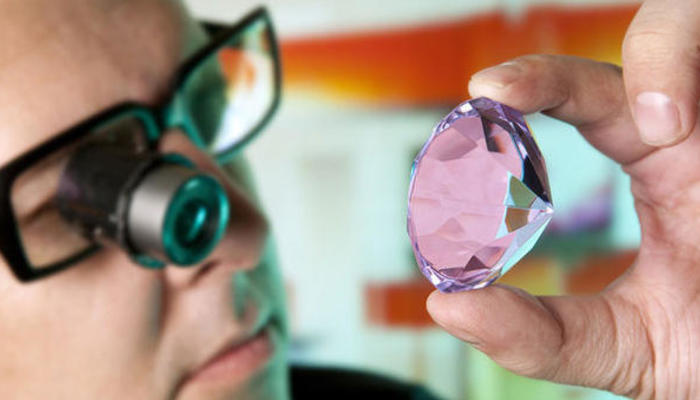Gemology, the science of precious stones, involves studying the properties, characteristics, and quality of gemstones. Professionals who specialize in this field are known as gemologists. These experts play a critical role in the gemstone industry, which includes mining, grading, cutting, and selling precious stones. But what exactly do gemologists do, and why are their skills so important?
Identification and Grading
Gemologists play a critical role in the identification and grading of gemstones, a process that is both an art and a science. Identification involves determining the type of gemstone, which can be challenging due to the vast number of minerals and the possibility of synthetic imitations or treatments that can alter the appearance and characteristics of a stone. Gemologists use specialized equipment, such as microscopes, spectrometers, and refractometers, to examine the physical and optical properties that define a gemstone’s identity.
Once identified, diamond grading comes into play. Grading assesses the quality of the gem based on standardized criteria. The most well-known system is the “Four Cs” for diamonds, which stands for Carat weight, Clarity, Color, and Cut. Other gemstones are similarly graded but may have additional factors taken into account, such as phenomena (e.g., asterism or chatoyancy), transparency, and rarity.
Through meticulous examination, gemologists can provide detailed reports that attest to a gemstone’s authenticity and quality. These reports are vital in the gem trade, offering consumers confidence in their purchases. Additionally, gemologists contribute to the preservation of market integrity by detecting treatments like dyeing, heat treatment, or irradiation that may improve a stone’s appearance but significantly affect its value.
The expertise of gemologists ensures that each gemstone can be appreciated and valued appropriately in the market. Their skill set is not only fundamental for consumer protection but also for maintaining the standards and trust necessary for the gemstone industry to thrive.
Jewelry Appraisal and Certification
Jewelry appraisal and certification are critical services provided by gemologists that are essential for a variety of purposes, including insurance coverage, resale, and understanding the true value of a piece of jewelry. Gemologists, with their specialized training and expertise in gemstones and jewelry, are uniquely qualified to conduct these assessments.
When a gemologist appraises a piece of jewelry, they thoroughly examine the item considering various factors such as the quality and size of the gemstones, the materials used in the piece, its craftsmanship, and current market trends. The appraisal document they produce provides an estimated value based on these analyses, which is vital for insurance purposes to ensure that the owner is adequately covered in the event of loss or theft.
Certification by gemologists is another layer of verification that attests to the authenticity and quality of the gemstones. This process involves a detailed examination and documentation of the gem’s characteristics, such as cut, color, clarity, and carat weight – commonly known as the ‘Four Cs’. Certificates from reputable gemological laboratories provide assurance to both buyers and sellers about the stone’s attributes and can significantly affect its value.
Gemologists use sophisticated tools and techniques to accurately identify and evaluate gemstones and jewelry. Their expertise ensures that appraisals and certifications are reliable and standardized, giving confidence to consumers in the jewelry market. Whether for personal enjoyment, investment, or for insurance reasons, consulting with a professional gemologist brings peace of mind that the value assigned to a piece of jewelry is both informed and fair.
Education and Research for Gemologists
Education for gemologists primarily revolves around the study of precious and semi-precious stones. This is encompassing their identification, grading, appraisal, and proper handling. Gemological education often begins with foundational courses. These cover the basics of mineralogy and crystallography. Since these are essential for understanding the properties and formation of gemstones.
From there, students delve into more specialized subjects such as gemstone identification. This involves learning to use tools like microscopes, refractometers, and spectrometers to determine a stone’s structure, optical properties, and authenticity.
Advanced coursework may include the study of gemstone treatments and enhancements, which are methods used to improve the appearance or durability of gems. Understanding these treatments is vital for accurate valuation and disclosure in the gem industry. Additionally, students learn about different cutting styles and the art of faceting to enhance a gemstone’s brilliance and value.
Research in gemology is continually advancing knowledge in the field. Many scientists and professional gemologists exploring topics such as the origin of specific inclusions. The development of new synthetic materials, and the detection of advanced treatments. Research also extends to the ethical sourcing of gemstones. This is aiming to ensure that gems are mined and distributed in ways that do not harm workers or the environment.
Professional organizations offer certification programs that validate a gemologist’s expertise. Organizations like the Gemological Institute of America (GIA) provide credentials that are widely recognized within the industry. Continuing education is important as well, as it allows gemologists to stay current with the latest developments and maintain their professional standing.
Cutting and Polishing
Gemologists are highly skilled professionals specializing in the study of gemstones. Their expertise extends beyond mere identification. They are also adept at enhancing the natural beauty of these precious stones through meticulous cutting and polishing techniques. The process begins with the careful selection of rough gemstones that display potential for brilliance, color, and clarity once cut.
Cutting is a precise art that transforms raw, unassuming crystals into sparkling gems. Gemologists must consider the stone’s natural properties, such as cleavage planes and crystal structure, to determine the most advantageous cut. This decision is crucial as it affects the stone’s final appearance and value. The cutting process typically involves sawing, bruting (or girdling), and faceting.
Sawing separates the rough into more manageable pieces, while bruting rounds out the stone. Faceting is where the gemologist’s craftsmanship truly shines; using a faceting machine, they grind small, flat surfaces known as facets at precise angles, optimizing the stone’s interaction with light to enhance its fire and brilliance.
Polishing follows cutting and is equally important. Gemologists use a series of finer abrasives to smooth the facets to a mirror finish. This step is critical as even the most expertly cut gemstone can appear lackluster without proper polishing. The gem’s surface must be free from scratches or blemishes to ensure maximum light reflection, giving it that coveted sparkle.
The combined expertise in cutting and polishing allows gemologists to unlock the hidden beauty within gemstones, turning them into treasured pieces that can be appreciated for generations. Through their work, gemologists contribute to the enduring allure of gems in jewelry and decorative arts.
Quality Assurance
Quality assurance is an essential aspect within the field of gemology, where gemologists play a crucial role. Meticulously trained to identify and evaluate gemstones, these specialists ensure that quality standards are consistently met and maintained. Their expertise is vital in verifying the authenticity, grading the quality, and thereby upholding the integrity of gemstones in the market.
Gemologists use their deep knowledge and specialized equipment, such as microscopes, spectrometers, and computerized tools, to conduct thorough examinations. They assess various quality parameters including color, clarity, cut, and carat weight. These are commonly known as the “Four Cs” in the gemstone industry. By performing these evaluations, they can detect any treatments or enhancements that a gemstone might have undergone to artificially improve its appearance.
The role of quality assurance in gemology extends beyond the assessment of individual stones. Gemologists contribute to the development of industry standards and best practices, which are fundamental in maintaining consumer confidence. They collaborate with certification bodies to provide reliable documentation that attests to a gemstone’s quality attributes and provenance.
Furthermore, gemologists are integral to the ethical sourcing of gemstones. They help monitor the supply chain to ensure that gems are sourced responsibly and sustainably, minimizing environmental damage and avoiding conflict zones.
Ethical Sourcing
In this market, there is an increasing focus on ethical sourcing in the jewelry industry. Gemologist is often involving in ensuring that the gem sourcing happens responsibly. This includes verifying that they are not conflict diamonds or stones that have been mined under conditions that violate human rights or environmental standards.
Custom Design Consultation
Custom jewelry design is another area where the expertise of a gemologist is invaluable. They can consult with customers on choosing the right gems for their pieces, considering factors like durability, color compatibility, and budget.
The Evolving Role in Technology
Advancements in technology have also changed the role of gemologists. Computer-aided design (CAD) programs, new gemstone treatments, and synthetic stone production mean that gemologists must constantly learn to stay current with industry practices.
Conclusion
Gemologists are vital to the integrity and functioning of the gemstone industry. Their expertise ensures that consumers can trust in the quality and authenticity of their purchases. You can start from the identification and grading of gems to education and cutting-edge research. Gemologists uphold standards that maintain consumer confidence and drive innovation within their field.
In this age fake products can be almost indistinguishable from the real thing. Hence the role of a gemologist has never been more critical. They are not just professionals dealing with beautiful stones. They are guardians of trust in one of humanity’s oldest industries. Are you buying a diamond ring or an amethyst necklace?. You have a chance that a gemologist will be playing a part in bringing that piece to you. Their role is multifaceted and continues to evolve with each new challenge the industry faces.





